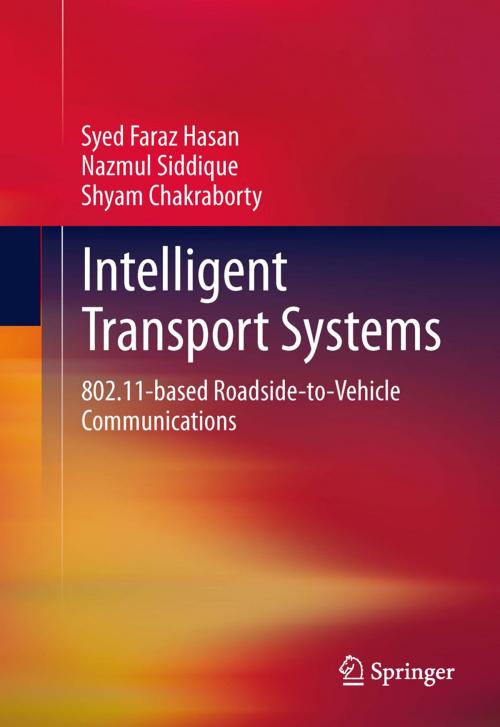Intelligent Transport Systems
802.11-based Roadside-to-Vehicle Communications
Nonfiction, Science & Nature, Technology, Telecommunications, Computers, Internet| Author: | Syed Faraz Hasan, Nazmul Siddique, Shyam Chakraborty | ISBN: | 9781461432722 |
| Publisher: | Springer New York | Publication: | July 25, 2012 |
| Imprint: | Springer | Language: | English |
| Author: | Syed Faraz Hasan, Nazmul Siddique, Shyam Chakraborty |
| ISBN: | 9781461432722 |
| Publisher: | Springer New York |
| Publication: | July 25, 2012 |
| Imprint: | Springer |
| Language: | English |
Focusing on the nuts and bolts of wireless network access for computers on board vehicles, this volume shows how in-car computerization now does much more than merely act as a glorified map-reader. Wireless communication is transforming road travel in ways previously undreamt of, allowing vehicles to “talk” to a wider network and monitor road conditions, potential delays and traffic congestion, all automatically. Toll payments can be made without opening the driver’s window on a cold day, while vehicles might themselves take active steps to avoid collisions.
It is the connection between on-board computers and wireless access points, ubiquitous in most cities now, that is a key area of research. Moving vehicles transfer their communications to new points as they progress, and this causes delays, known as “handover latency”. In this book, new stochastic models are developed to map the disruption when connecting to 802.11 WLAN points. It details the application of stochastic tools to analyzing communication networks, as well as previous literature on handover latency and relevant mathematical modeling. Finally, it presents a scheme for monitoring traffic congestion using WLAN connectivity. This volume will be a useful addition to the libraries both of wireless communication students and those studying probability theory.
Focusing on the nuts and bolts of wireless network access for computers on board vehicles, this volume shows how in-car computerization now does much more than merely act as a glorified map-reader. Wireless communication is transforming road travel in ways previously undreamt of, allowing vehicles to “talk” to a wider network and monitor road conditions, potential delays and traffic congestion, all automatically. Toll payments can be made without opening the driver’s window on a cold day, while vehicles might themselves take active steps to avoid collisions.
It is the connection between on-board computers and wireless access points, ubiquitous in most cities now, that is a key area of research. Moving vehicles transfer their communications to new points as they progress, and this causes delays, known as “handover latency”. In this book, new stochastic models are developed to map the disruption when connecting to 802.11 WLAN points. It details the application of stochastic tools to analyzing communication networks, as well as previous literature on handover latency and relevant mathematical modeling. Finally, it presents a scheme for monitoring traffic congestion using WLAN connectivity. This volume will be a useful addition to the libraries both of wireless communication students and those studying probability theory.















